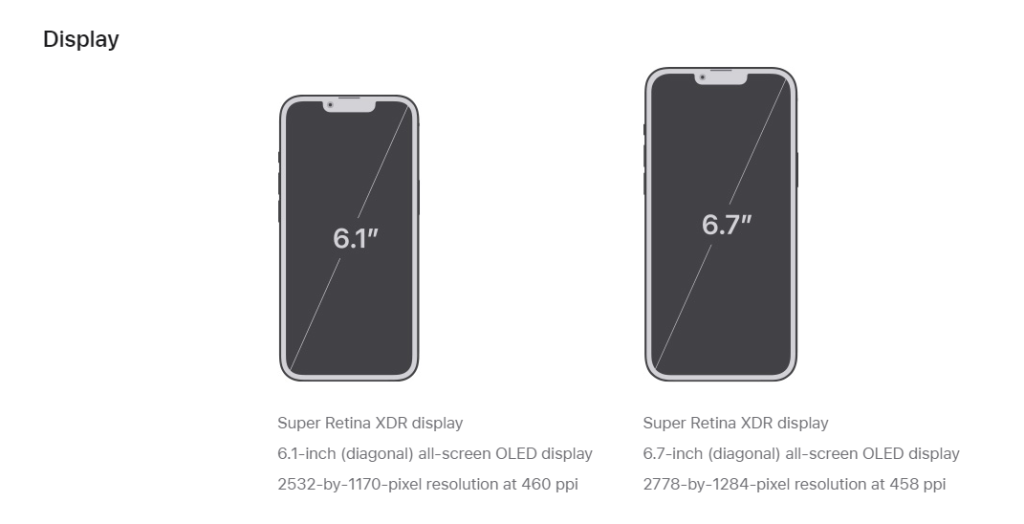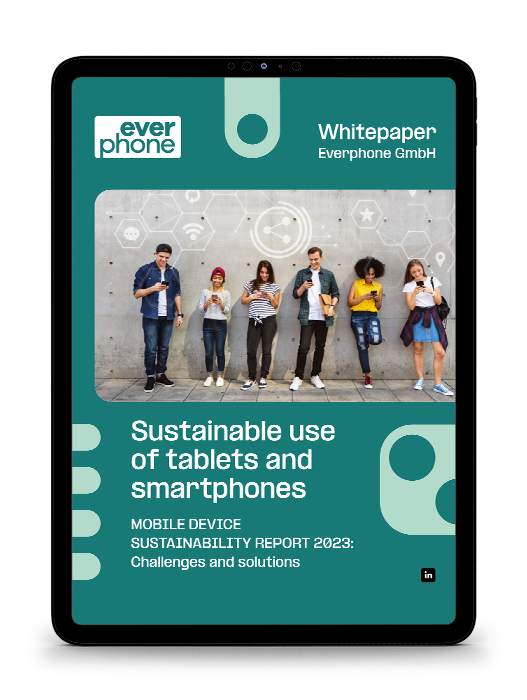Display technologies
Our glossary explains basic terms and abbreviations relating to mobile working, the use of smartphones and tablets in the corporate environment (Enterprise Mobility) and security aspects in the use of mobile devices.
Display technologies for smartphones
Technical structure of smartphone displays
OLED display, LCD, IPS display—what does it all actually mean? We give an overview of the display technologies used in current smartphones and tablets and clear up the marketing terms of some manufacturers.
Current display technologies: LCD vs. OLED
Currently, only two common display technologies are used in smartphones and tablets: LCDs and OLED displays.
Liquid Crystal Displays (LCD)
Firstly, liquid crystal displays (LCD). This screen technology is also used in countless computer monitors and flat-screen televisions. By the way, since the “D” already stands for display, the term “LCD display” makes no sense.
What is behind it? Light!
Because liquid crystal displays or LC displays need a backlight, which in older PC monitors came mainly from cold cathode tubes (CCRT tubes). Today, LEDs are almost exclusively used for backlighting, which, mind you, has nothing to do with OLED technology.
How does an LC display work?
The liquid crystals in front of the illuminated background are controlled by electrical pulses. When a certain voltage is applied, this influences the polarization direction of the light shining through. In other words, the liquid crystals are aligned at specific angles in fractions of a second (about 2–20 milliseconds) to allow light to pass through. Each image point (pixel) can be switched continuously transparent, which ultimately leads to the coloring of the picture element and the display of a raster graphic: An image is created.
In-Plane Switching (IPS)
IPS displays are a special type of LCD. Here, the voltage-carrying electrodes are located in a plane parallel to the display surface. Their advantage is the high color fastness at changing viewing angles (“viewing angle stability”). Other LCD technologies either have a helical arrangement (TN = Twisted Nematic) or are perpendicular to the substrate surface (PVA/MVA = Vertical Alignment).
Organic Light-Emitting Diodes (OLED)
As the name suggests, the picture elements of an OLED display emit light themselves. Accordingly, an OLED display no longer needs a backlight. As a result, this means higher contrasts, since a black pixel is not just covered, as in LCDs, but no longer emits any light at all. This makes for an overall “crisper” subjective picture impression. However, the shorter lifespan and lower luminous efficiency of OLED displays is a disadvantage. Due to the rapid development of OLED technology over the last few years and especially the short life cycles of mobile devices, these disadvantages are becoming less and less important.
Proprietary names for display technologies
Of course, smartphone manufacturers are quick to come up with sounding advertising names. Here is a brief overview.
Samsung: from “AMOLED” to “Super AMOLED
Samsung prefixes its OLED displays with the abbreviation “Active Matrix” and thus comes up with the name AMOLED for “Active Matrix Organic Light-Emitting Diodes”. In principle, AMOLED displays are actually just OLED displays from Samsung.
Samsung supplies numerous other companies as an OEM supplier, including Apple. OEM stands for “original equipment manufacturer.”
“Super AMOLED” displays are a further development of the original OLED concept at Samsung. Whereas in the beginning of OLEDs a foil for haptic operation was mounted in front of the actual display, Super-AMOLED has the technology completely integrated in the panel itself.
Apple: Retina, Liquid Retina, Super Retina
“Retina” display is simply Apple’s proprietary component designation for its displays. The name is derived from the Latin name of the retina and is supposed to mean that the pixels can no longer be distinguished or recognized individually with the naked eye at a natural viewing distance. Thus, the name refers to a certain pixel density rather than a display technology. Nevertheless, there are differences:
| Retina | The standard designation for LC displays at Apple. |
| Liquid Retina | This is an LCD technology with a higher pixel density introduced in 2018. |
| Liquid Retina HD | An LCD used in the iPhone XR and iPhone 11 with a rounded design and particularly high scanning rate. |
| Super Retina HD | “Super Retina” stands for OLED technology at Apple. The OLED displays of the iPhone XS and iPhone XS Max were marketed as “Super Retina HD”. |
| Super Retina XDR | This is Apple’s designation for the OLED displays beginning with the iPhone 11 Pro and iPhone Pro Max. |






